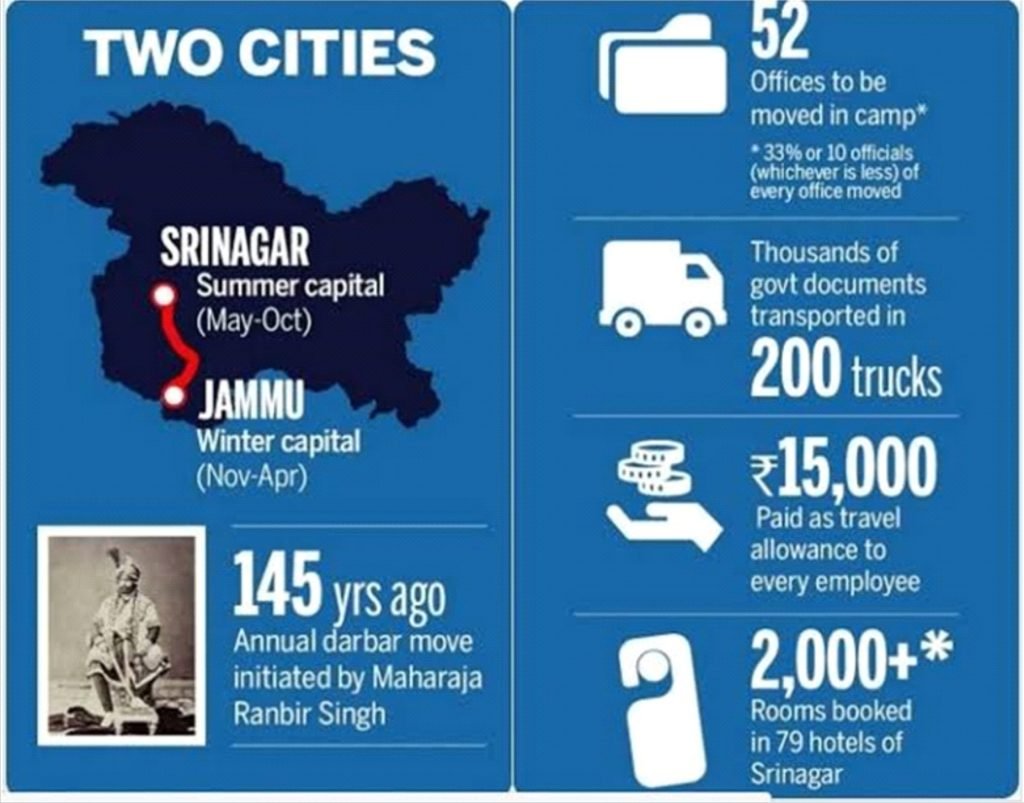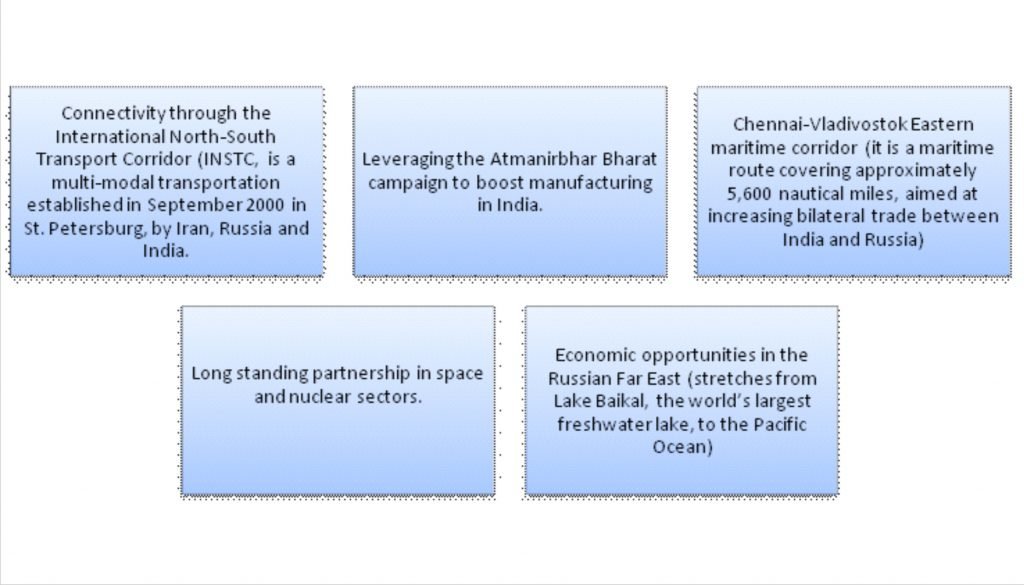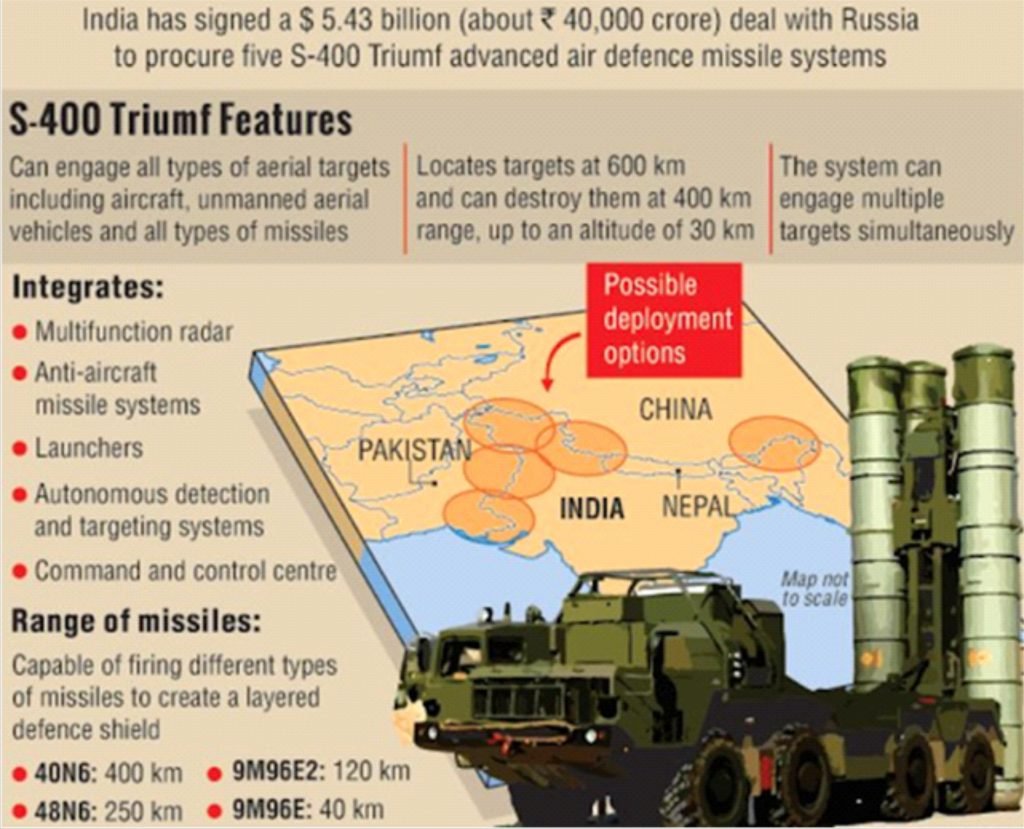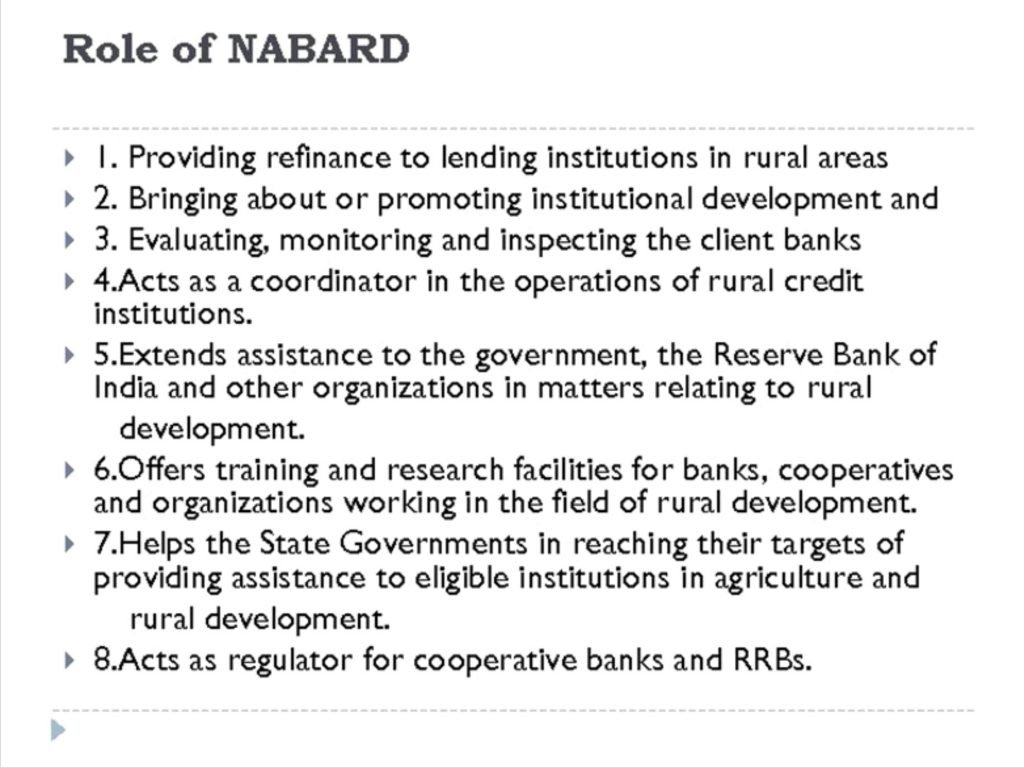Current Affairs (9th April 2021)
Capitals of J&K
Context:
- Jammu and Kashmir have two different capitals for winter and summer seasons and this year, it will shift only “sensitive records” from Jammu to Srinagar this summer, unlike in previous years when the entire administration and records would be shifted during “Durbar Move”.
- The UT government has decided to switch to e-governance, will all office records converted into digital format. As a result, while the Secretariat employees and some offices will move from Jammu to Srinagar as usual this year, only sensitive records will be shifted from one place to another.
The tradition
- Durbar Move is a bi-annual shifting of the Civil Secretariat and other offices of the state government from Jammu to Srinagar in summer, and vice versa in winter.
- This is done as Jammu & Kashmir has two capitals: Kashmir during summer and Jammu during winter.
- In Jammu, offices shut on the last Friday and Saturday of April and reopen in Srinagar on the first Monday after a gap of a week. In Kashmir, offices shut on the last Friday and Saturday of October, to reopen in Jammu on the first Monday after a week’s gap, in November.
The reasons why
- Durbar Move is a tradition started 149 years ago started by the erstwhile Dogra rulers who hailed from Jammu, but had expanded their boundaries to Kashmir including what is now Pakistan-occupied Kashmir, and Ladakh.
- Jammu, Kashmir and Ladakh are very different from one another geographically, linguistically and culturally, and in those days were poorly connected by road.
- It is generally understood that the Durbar Move was started to take the administration to the doorstep of the people of Kashmir which is closer to Ladakh.
- During summer, ruling from Kashmir also helped in ensuring adequate supplies to Ladakh, which is closer to Kashmir than Jammu, before the winter snowfall would cut off Ladakh.
- The practice also enabled greater interaction and bonding among the people of Jammu, Kashmir and Ladakh.
The effort
- Until 2019, the administration used to engage hundreds of trucks and buses for carrying office records and officials from one capital city to another.
- For safe transportation, the Jammu & Kashmir police and paramilitary forces would dominate the entire Jammu-Srinagar national highway.
- Apart from the expenses incurred on hiring trucks and buses, the moving staff also used to be paid TA and DA, besides arrangements for their accommodation.
The criticism
- Voices of protest started during the late 1980s, over the amount of money and time spent on the exercise. However, the practice also enjoyed public support.
- In the late 1980s, the then government of Chief Minister Dr Farooq Abdullah had decided to bifurcate the Secretariat by permanently keeping some departments in Kashmir and some in Jammu, but Jammu observed a bandh for nearly 45 days in protesting, leading to the government withdrawing its decision.
- In recent years, many criticised the government for spending nearly Rs 200 crore on this exercise every year when it did not have enough funds even to pay salary to its employees.
- Last year, the Jammu & Kashmir High Court observed that there was no legal justification or constitutional basis for the Darbar Move tradition.
- Pointing out that the practice has resulted in wastage of tremendous amount of time, efforts and energy on inefficient and unnecessary activity, a Division Bench observed that valuable resources of the state (financial and physical) cannot be diverted to completely non-essential usage when the Union Territory in unable to provide even basic essentials to its people.
- The court recommended that in case the practice was rationalised, the resources and time saved could be utilised towards the welfare and development of the UT; the money saved could also be used to address Covid-related issues like food shortage, unemployment and healthcare.

Rupee fall
Context:
- Recently, the rupee fell sharply by 105 paise — its biggest single session fall in 20 months— to close at a five-month low of 74.47 against the US dollar amid concerns over Covid-19 and the RBI’s newly announced programme to buy bonds worth Rs 1 lakh crore this quarter. These factors come on top of a strengthening dollar against the euro, which is resulting in a relative weakness of the rupee.
- The newly announced programme, called G-SAP, is being read as a sort of quantitative easing policy in which the RBI tries to support the government’s elevated borrowing programme through infusion of liquidity. This, along with a rising dollar, is creating grounds for the rupee to depreciate further.
Will the RBI intervene?
- The general feeling among experts is that the RBI may not intervene if the depreciation is gradual, but may do so if there is a big volatility.
Imapct:
- Depreciation in the rupee impacts all expenditure in dollar terms— imports, foreign education, travel, investments abroad, medical treatment etc. On the other hand, if you are an exporter or an NRI sending money back home, depreciation would fetch you more rupees per dollar.
- A depreciating rupee increases the cost of crude import, which accounts for almost 20% of India’s imports. A rise in cost of crude raises fuel prices and inflation. That, in turn, leads to a rise in interest rates, which increases our borrowing cost.
Steps can be taken
- Individuals should cover for volatility risk for their planned expenditures in foreign currency. And there are several ways to do it.
- For individuals sending their children abroad for studies in 5-10 years, they can start investing in international funds that invest in global markets through feeder funds or fund of funds.
- While an Indian investors invest in rupees in the fund of funds offered by fund houses in India, the money gets invested in dollar terms at the current exchange rate in a global fund. Even if the rupee depreciates from 74 to 85 in five years, this fund will fully protect the education cost against the currency depreciation risk.
- On the other hand, if one has to make a significant expenditure in foreign currency in 4-5 months, he or she has more than one option. Create a deposit account in the US and transfer the fund abroad. Or, go for a currency hedge in the exchange and that will cover you against the currency volatility.
India-Russia Meet
Context:
- Recently, Indian and Russian Foreign Ministers addressed each other’s concerns to build on the common “resilient” groundon a wide range of issuesfrom defence supplies to the S-400 air defence system, India’s role in Afghanistan and Taliban’s involvement in power-sharing to cooperation on Covid vaccines and India’s participation in the Quad grouping.
Discussed Cooperation in Following Sectors:

Other views:
- Both also discussed the sale of the S-400 air defence system.

- Russian Foreign Minister clarified that the Russia-China relations are at the highest in the history, but these relations do not pursue a goal of establishing a military alliance.
- He also referred to the Quad grouping and called it an “Asian NATO”, a term sometimes used by China.

- Russia and India are working for stability and connectivity in the Asia-Pacific and urged that “military alliances” should not come up in Asia.
- Russia referred to the formulation of “Asia Pacific” while India referred to “Indo-Pacific”.
- Both ministers also took up the possible export of the Covaxin to Russia which is likely to be cleared by experts.
Surface Enhanced Raman Spectroscopy (SERS)
Context:
- Indian Institute of Technology, Delhi has developed a handheld Surface Enhanced Raman Spectroscopy (SERS)-based platform for early diagnosis of dengue and also gives dengue test results within one hour (rapid diagnosis).
- The research work was funded by IMPRINT India programme of the Ministry of Education.
Difference between RT-PCR and SERS
| Surface Enhanced Raman Spectroscopy (SERS) | Reverse Transcriptase Polymerase Chain Reaction (RT-PCR) |
| · It is a surface-sensitive technique that enhances Raman scattering by molecules adsorbed on rough metal surfaces or by nanostructures such as plasmonic-magnetic silica nanotubes.
· Early diagnosis of dengue is the key to prevent deterioration of a patient’s health. |
· It is a conventional diagnostic tool.
· It is a time-taking process and it also requires expensive equipment and reagents for the diagnosis of dengue. |
NABARD registers growth rate at 23.5%
Context:
- National Bank for Agriculture and Rural Development (NABARD) closed its business at Rs. 6.57 lakh crore in FY 2020-21, recording a growth rate of 23.5%.
About:
- Under Aatmanirbhar Bharat Abhiyan, NABARD released amounts to cooperative banks,Regional Rural Banks (RRBs) and to NBFC-MFIs (Non-Banking Financial Company: Micro Finance Institution) through a Special Liquidity Facility (SLF).
- NABARD registered a total refinance disbursement of Rs. 2.23 lakh crore to support agriculture and rural development activities during the pandemic.
- A refinance facility of Rs. 500 crore was introduced to support the Government of India’s Water, Sanitisation and Hygiene (WASH) programme.


